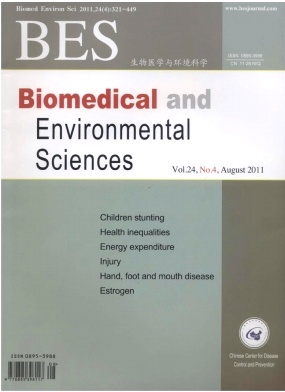Nutritional Status of Children during and post-Global Economic Crisis in China
doi: 10.3967/0895-3988.2011.04.001
-
Key words:
- Economic Crisis /
- Stunting /
- Underweight /
- Anemia /
- Children /
- Infant /
- Surveillance
Abstract: Objective To describe the impact of the global economic crisis on the nutritional status of children in China during and after the crisis.Methods Data from 1990 to 2010 were sourced from the National Food and Nutrition Surveillance System.Approximately 16 000 children under 5 years old were selected using a stratified random cluster method from 40 surveillance sites.Anthropometric and hemoglobin measurements for children under 5 were conducted.Nutritional status was determined according to WHO child growth standards.Results Prevalence of underweight and stunting in children under 5 had a downward trend.Underweight prevalence was close to normal (less than 5%),with prevalence of stunting 12.6% in 2009 and 12.1% in 2010 in rural areas.Prevalence of stunting in infants under 6 months and 6-12 months old in poorer rural areas increased from 5.7%-9.1% and 6.7%-12.5%,respectively,in 2008-2009.This trend also continued post-crisis in 2010.Prevalence of stunting in children left behind by mothers was 20%-30% higher than in children the same age in general and poorer rural areas.Prevalence of anemia in children did not change in rural areas,but prevalence of anemia in all age groups increased in poorer rural areas,especially in children under 24 months old.Level reached 30%-40% in 2009,and fluctuated in 2010.Conclusion The nutritional status of children under 5 was comparatively stable during and after the global economic crisis,attributable to the Chinese government's policy response.The nutritional status in poorer rural areas fluctuated in response to the economic crisis and,thus,relevant action and intervention must be taken immediately to help the most vulnerable population in poorer rural areas.A proper national nutritional strategy for children under 2 years old,including nutrition supplementation for pregnant women and in-home fortification for complementary feeding,should be initiated.
| Citation: | CHEN ChunMing, HE Wu, WANG YuYing, DENG LiNa, JIA FengMei. Nutritional Status of Children during and post-Global Economic Crisis in China[J]. Biomedical and Environmental Sciences, 2011, 24(4): 321-328. doi: 10.3967/0895-3988.2011.04.001 |







 Quick Links
Quick Links
 DownLoad:
DownLoad: